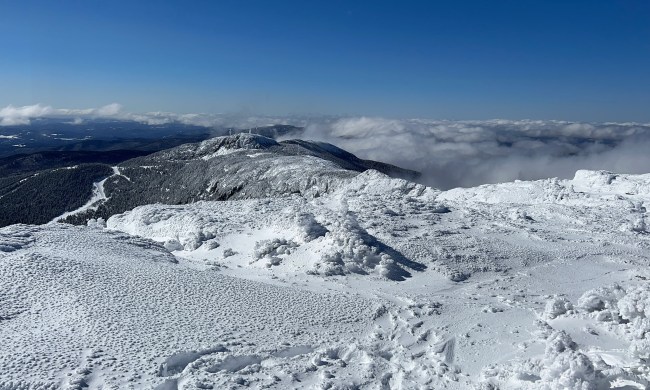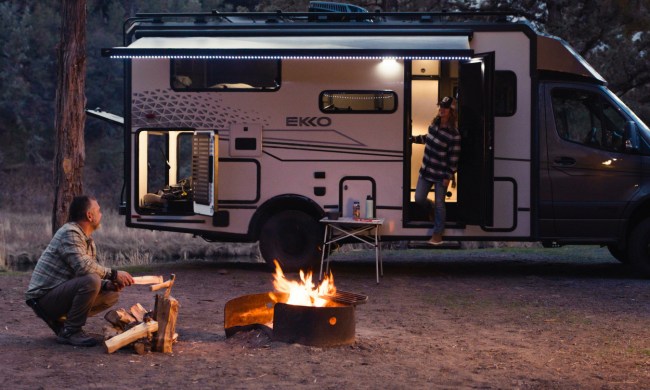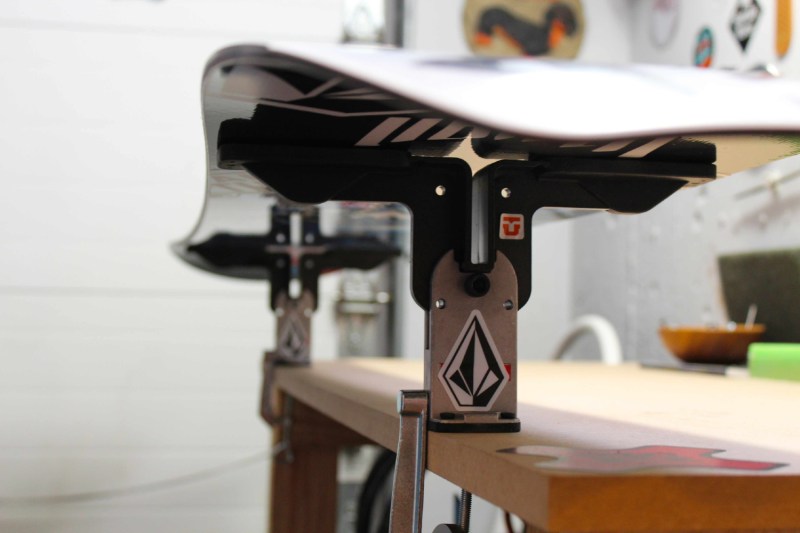
Waxing your skis or snowboard provides a smooth glide and enhances the durability of your equipment. Whether carving up groomers or floating through pow, a waxed board or skis offer a difference you can feel. And it’s nice to know your equipment will be ready to ride for years when you take care of it properly.
But ski wax can be hazardous to your health. In the past, fluorinated ski and snowboard wax — also called fluoro wax — used harmful substances in the name of speed. While that enhanced performance, it also posed a risk to consumers and the environment.
Today, several companies offer eco-friendly, sustainable wax that doesn’t compromise performance. That’s a boon for skiers and riders looking to stay healthy and protect our environment.
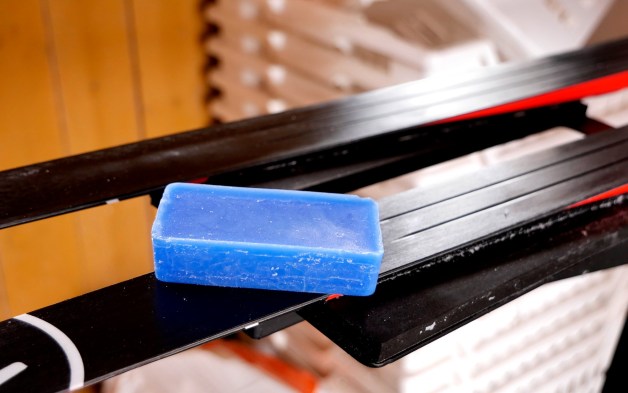
The dangers of fluorinated ski wax
Skiing and snowboarding are all about feeling and sensations. There’s the exhilaration as you build speed on a morning run or the satisfaction as you lock in a turn. And who doesn’t enjoy the weightlessness of riding over fresh powder? But while freshly waxed equipment enhances all those moments, fluoro wax presents a severe risk.
That’s because fluorinated waxes use an assortment of toxic ingredients. Those consist of polyfluoroalkyl substances (PFAS), which include the chemicals perfluorooctanoic acid (PFOA) and perfluorooctane sulfonic acid (PFOS). PFAS — also known as “forever chemicals” — are linked to numerous adverse health conditions.
A recent study on fluorinated ski wax returned alarming results. It found that skiers and snowboarders are exposed to fluoro wax often, especially if they don’t use protective equipment. That’s the last thing you need when prepping for a powder day.
Not only that, but PFAS leeches into the snow during each run, polluting the mountains and staying in water sources for years. With our winters already at risk from climate change, eliminating fluoro waxes seems a worthy cause.
To that end, there’s an effort to move away from fluoro wax in the ski and snowboard industries and sanctioning bodies ban its use in competition. That’s good news for snow sports enthusiasts and the health of our planet. This ban is also not fully in effect.
Aren’t all ski wax and snowboard wax brands non-fluoro these days?
Though most wax manufacturers are moving away from using PFAS in waxes, many are simply shifting the goalposts and noting the use of “synthetic fluoro” compounds, which is marketing speak; these companies are telling you they don’t use the specific banned items, but they use other things that may also be bad for the environment.
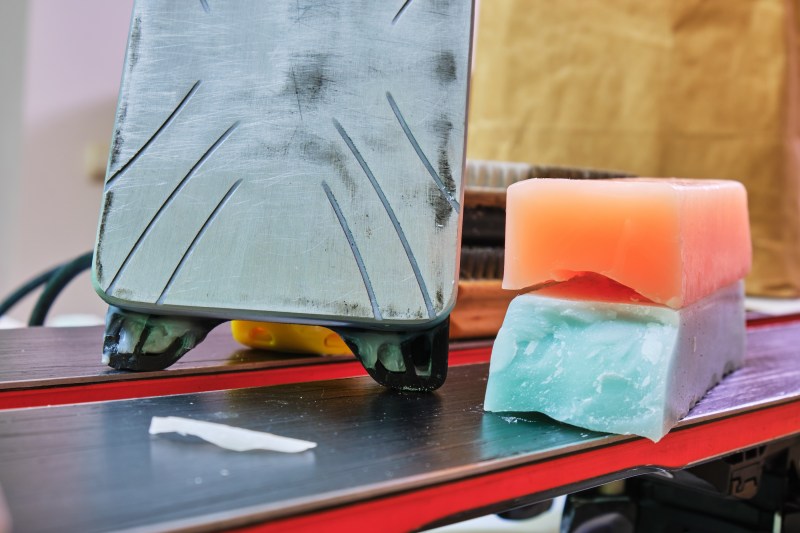
Sustainable ski and snowboard wax: our three favorites
Using fluoro-free ski wat makes sense. And with the expert formulations of several manufacturers, you don’t have to compromise on performance. Here are our favorites.

Purl Wax: Reasonable cost and dependable glide
If you’re looking for incredible performance at a fair price, is right up your alley. Based in Colorado and leading the way on a fluoro-free future, the company hand-pours each bar. Prices start at $11.95, makinstockingck up for the wint easyer.
Their “Natural” line of waxes is petroleum-free, biodegradable, and sustainably sourced. For eco-conscious skiers and snowboarders, Purl Natural wax is a must-have.
From Purl:
Founded in 1999, off “Pearl Street” in Boulder. Our goal has been to help accelerate the transition to FLUORO-FREE ski and snowboard waxes by creating a full range of performance-driven, non-toxic snow products.

Wend Waxworks: Expert formulations for maximum performance
With decades of experience and refined wax formulations, Wend takes speed and sustainability to new levelsThe manufacturer makes a recipe for everyone fromom its Performance waxes to its Race Waxne.
Particularly interesting is Wend’s “NP” line of waxes — or “Non-Petroleum” — that use a 100 percent plant-derived formula and are non-toxic and biodegradable.
From Wend:
The current WEND snow wax formulations have resulted from decades of progressive blend reformulation and subsequent on-slope and in-lab testing.

Mountain Flow: Eco-friendly and widely available
Since its founding in 2016, Mountain Flow has been focused on eco-friendly products. The company performed two years of R&D and tested over 200 formulations before releasing itf plant-based, fluoro-free waxes. And since Mountain Flow is readily available at evo and , it’s a convenient add-on when buying new gear.
Mountain Flow makes Hot Wax, Quick Wax, and Race Wax, for optimal slide ivariousof conditions. Every product is plant-derived, petroleum-free, and biodegradable.
From Mountain Flow:
In 2016, we formed mountainFLOW eco-wax with a straightforward mission: provide a simple and eco-friendly way to improve the skiing experience.
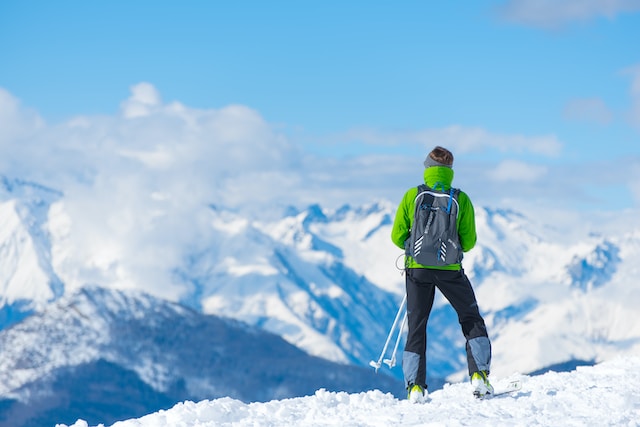
Selecting the correct ski wax: Why temperature ratings matter
It might seem like ski and snowboard wax is a one-size-fits-all product. After all, how different can the formulations be? It’s just wax, right?
While all-temperature wax works in most scenarios, it doesn’t offer the tuned performance of temp-specific formulas. Temperature-rated ski and snowboard wax is engineered to match snow quality and temperature. In colder conditions, snow crystals sharpen and harden, wearing away at wax. Because of that, cold-rated waxes are more solid and durable, standing up better to frozen wear and tear.
How ski wax and snowboard wax work
Wax fills in the pores on your skis or snowboard, which become exposed as you ride and wax erodes from your base. Whether you wax your skis or snowboard at home or have it professionally done, the end result is the same: Wax “melts” off of your skis or snowboard as you ride.
The purpose of wax is to let you glide over the snow. Reducing friction is job one, and wax helps create less coefficient of friction (read: your board slides over snow) by turning the snow it comes into contact with warmer, essentially creating an unnoticeable layer of water you glide on. As you leave that little trail of water behind, it becomes ice. This is why tracked runs are less attractive to skiers and snowboarders; depending on conditions, the terrain can be really icy or slushy as a result of skis and snowboards tracking over it.
Warmer conditions lead to rounded snow crystals, necessitating a softer wax recipe. Wax made for warmer conditions uses hydrophobic additives to repel moisture in slushy conditions. Without it, a snowboard can feel like a magnet stuck to the snow.
Other recipes on the temperature scale adjust accordingly, providing a tailored slide to suit the weather. Not only that, but you can pick from nano-tech or racing formulas for even more speed.
When selecting temp-specific wax, it’s like putting track-ready tires on a sports car. While all-season radials would suffice, using a product designed for specific conditions leads to improved performance.
Eco-friendly wax offers performance and sustainability to everyday skiers and riders. With their non-toxic, fluoro-free formulas, Purl, Wend, and Mountain Flow lead the way in safe, fast ski wax. Using products that protect people and the environment is a good feeling, too. For snow sports enthusiasts, using sustainable wax is an easy decision, and finding a great wax is easier than ever these days. We prefer Purl and Wend for their long-standing dedication to eco-friendly wax, but mountainFLOW is great, too.


